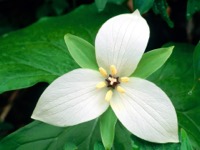Difference between revisions of "Petals"
(Created page with "File:lighterstill.jpgright|frame ==Origin== from modern Latin ''petalum'' (in late Latin‘metal plate’), from Greek ''petalon'' ‘le...") |
m (Text replacement - "http://" to "https://") |
||
| Line 3: | Line 3: | ||
==Origin== | ==Origin== | ||
from modern [[Latin]] ''petalum'' (in late Latin‘metal plate’), from [[Greek]] ''petalon'' ‘leaf,’ neuter (used as a noun) of ''petalos'' ‘outspread.’ | from modern [[Latin]] ''petalum'' (in late Latin‘metal plate’), from [[Greek]] ''petalon'' ‘leaf,’ neuter (used as a noun) of ''petalos'' ‘outspread.’ | ||
| − | *[ | + | *[https://en.wikipedia.org/wiki/18th_century 18th Century] |
==Definitions== | ==Definitions== | ||
*1:each of the segments of the corolla of a flower, which are modified leaves and are typically [[colored]]. | *1:each of the segments of the corolla of a flower, which are modified leaves and are typically [[colored]]. | ||
==Description== | ==Description== | ||
| − | '''Petals''' are modified leaves that [[surround]] the reproductive parts of flowers. They are often brightly colored or unusually shaped to [[attract]] pollinators. Together, all of the petals of a flower are called a ''corolla''. Petals are usually accompanied by another set of special leaves called ''[ | + | '''Petals''' are modified leaves that [[surround]] the reproductive parts of flowers. They are often brightly colored or unusually shaped to [[attract]] pollinators. Together, all of the petals of a flower are called a ''corolla''. Petals are usually accompanied by another set of special leaves called ''[https://en.wikipedia.org/wiki/Sepals sepals]'', that collectively form the ''[https://en.wikipedia.org/wiki/Calyx calyx]'' and lie just beneath the corolla. The calyx and the corolla together make up the ''[https://en.wikipedia.org/wiki/Perianth perianth]. When the petals and sepals of a flower are [[difficult]] to distinguish, they are collectively called tepals. Examples of [[plants]] in which the term tepal is appropriate include genera such as [https://en.wikipedia.org/wiki/Aloe Aloe] and [https://en.wikipedia.org/wiki/Tulipa Tulipa]. Conversely, genera such as Rosa and Phaseolus have well-distinguished sepals and petals. |
| − | Although petals are usually the most conspicuous parts of animal-pollinated flowers, [[wind]]-pollinated species, such as the grasses, either have very small petals or lack them entirely.[ | + | Although petals are usually the most conspicuous parts of animal-pollinated flowers, [[wind]]-pollinated species, such as the grasses, either have very small petals or lack them entirely.[https://en.wikipedia.org/wiki/Petal] |
[[Category: Botany]] | [[Category: Botany]] | ||
Latest revision as of 01:57, 13 December 2020
Origin
from modern Latin petalum (in late Latin‘metal plate’), from Greek petalon ‘leaf,’ neuter (used as a noun) of petalos ‘outspread.’
Definitions
- 1:each of the segments of the corolla of a flower, which are modified leaves and are typically colored.
Description
Petals are modified leaves that surround the reproductive parts of flowers. They are often brightly colored or unusually shaped to attract pollinators. Together, all of the petals of a flower are called a corolla. Petals are usually accompanied by another set of special leaves called sepals, that collectively form the calyx and lie just beneath the corolla. The calyx and the corolla together make up the perianth. When the petals and sepals of a flower are difficult to distinguish, they are collectively called tepals. Examples of plants in which the term tepal is appropriate include genera such as Aloe and Tulipa. Conversely, genera such as Rosa and Phaseolus have well-distinguished sepals and petals.
Although petals are usually the most conspicuous parts of animal-pollinated flowers, wind-pollinated species, such as the grasses, either have very small petals or lack them entirely.[1]
